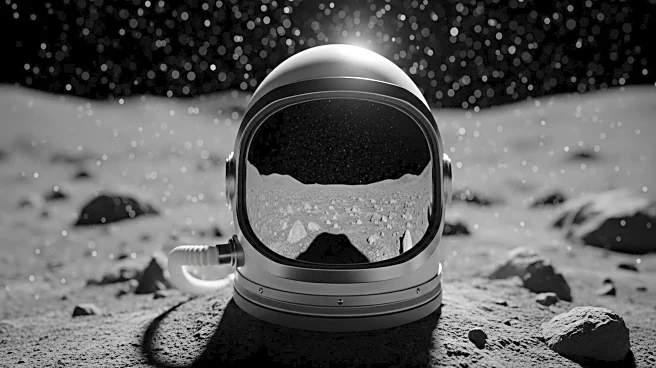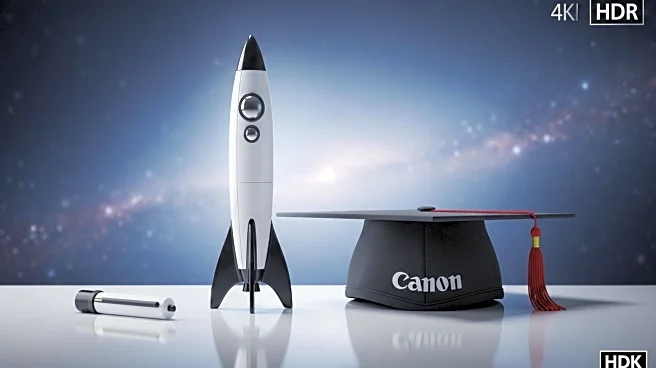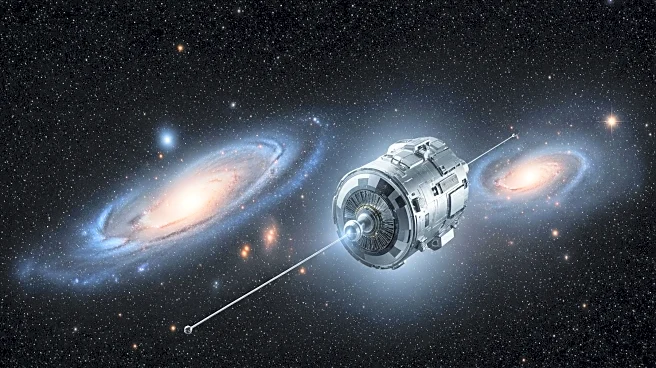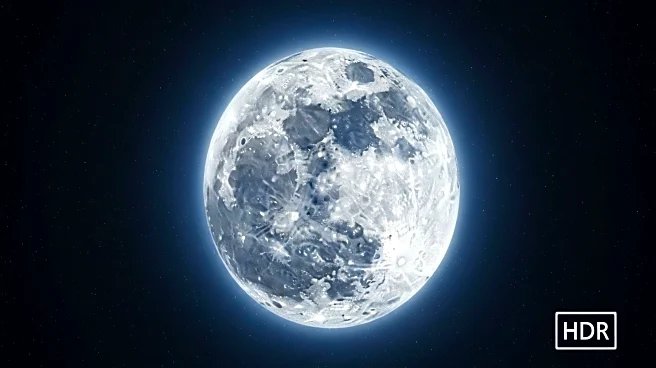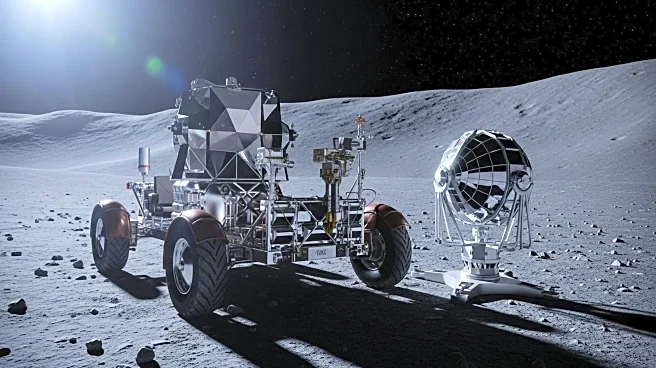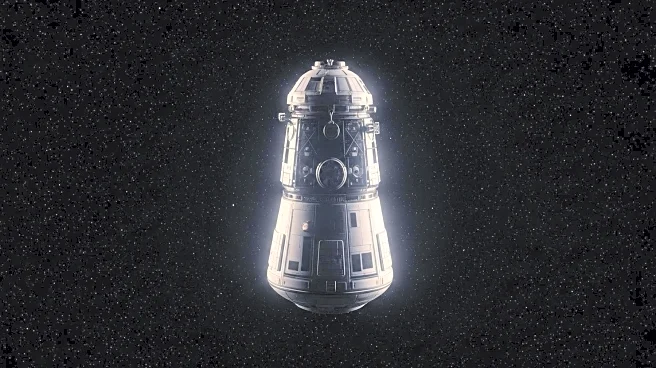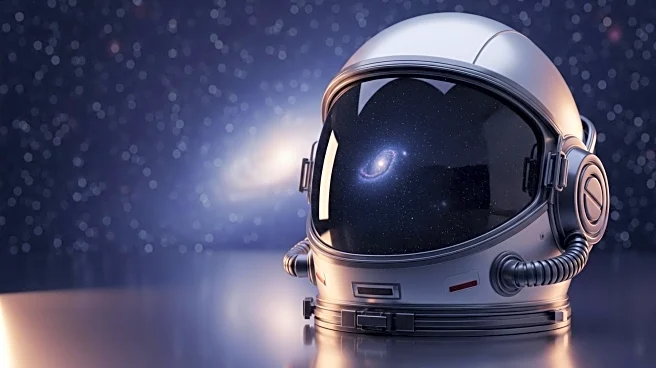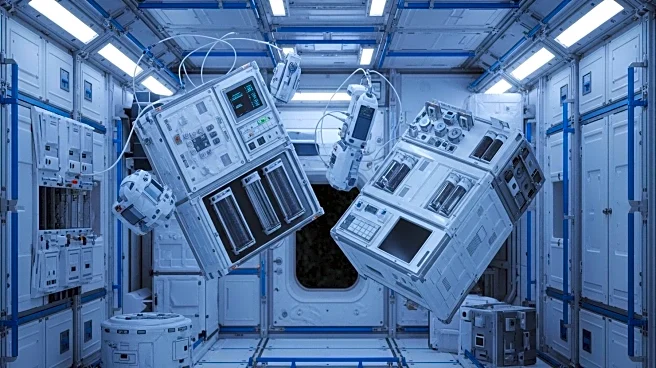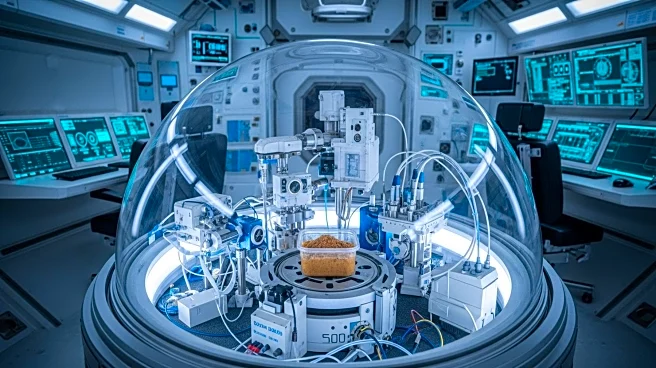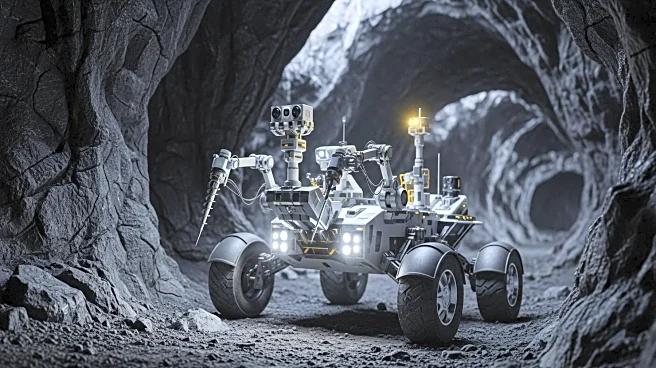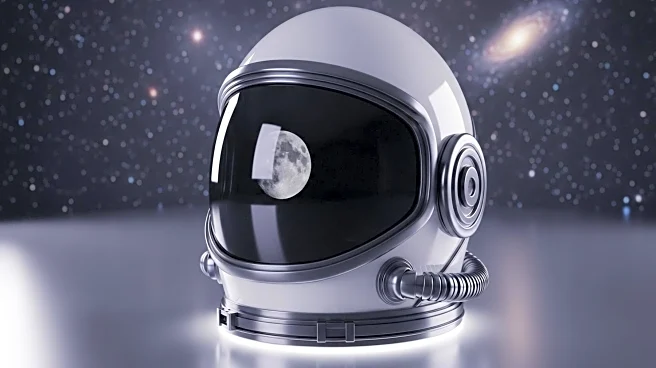What is the story about?
What's Happening?
Recent studies have confirmed the presence of water on the Moon, particularly in the form of ice within craters near the lunar South Pole. This discovery follows decades of speculation and indirect evidence dating back to the 1960s. The confirmation was achieved through analysis of data from multiple lunar missions, which revealed light reflections characteristic of pure ice. The Indian Space Research Organization's Chandrayaan-3 mission, which successfully landed near the lunar South Pole, aims to further study this water. The presence of water on the Moon is believed to be the result of comet impacts or other celestial bodies carrying trace amounts of water ice.
Why It's Important?
The confirmation of water on the Moon has significant implications for future lunar exploration and potential colonization. Water is a critical resource for sustaining human life and can be used to produce oxygen and hydrogen for fuel. This discovery could reduce the cost and complexity of future missions by providing a local source of water, thereby supporting longer-term human presence on the Moon. Additionally, it opens up possibilities for scientific research into the Moon's history and the solar system's evolution. The presence of water could also make the Moon a strategic location for further space exploration, serving as a launch point for missions to Mars and beyond.
What's Next?
The discovery is likely to accelerate international interest and investment in lunar exploration. NASA and other space agencies may prioritize missions to the Moon's South Pole to further investigate and utilize the water resources. This could lead to increased collaboration or competition among nations in space exploration. The development of technology to extract and utilize lunar water will be a key focus, potentially leading to advancements in space travel and habitation. The findings may also influence policy decisions regarding space exploration funding and international agreements on lunar resource utilization.
AI Generated Content
Do you find this article useful?
